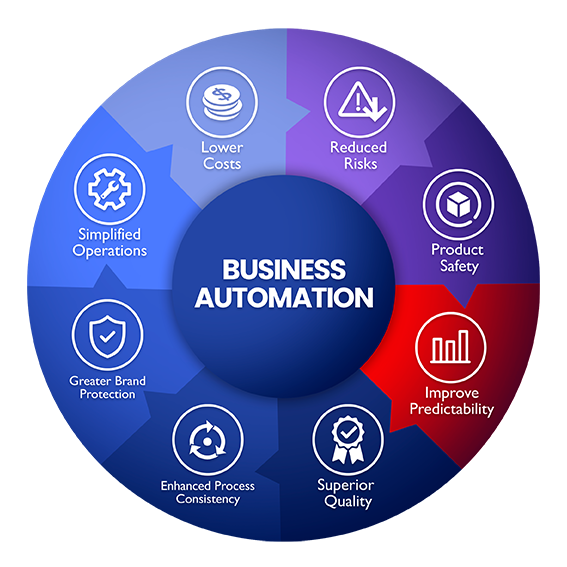The Essential Steps of Website Development for Success

By Tanu Mittal, Rootbix Infotech Pvt. Ltd.
In today’s digital age, having a well-designed and functional website is crucial for any business or individual looking to establish an online presence. At Rootbix Infotech, we understand that website development is not just about creating a visually appealing site; it’s about building a platform that meets your business goals, engages users, and drives growth.
Whether you’re starting from scratch or redesigning an existing website, the development process requires careful planning and execution. In this blog post, I’ll walk you through the essential steps of website development, ensuring your project is structured for success from the very beginning.
Step 1: Defining the Purpose and Goals
Before diving into the technical aspects of website development, it’s important to clarify the purpose of your site. Ask yourself questions such as:
- Who is the target audience?
- What are the key objectives (e.g., sales, lead generation, brand awareness)?
- What functionalities does the website need (e.g., e-commerce, blogging, contact forms)?
By having a clear vision, you’ll set the foundation for the entire project, ensuring that every design and development decision aligns with your goals.
Step 2: Planning and Research
Once you’ve identified the goals of the website, the next step is thorough planning and research. This involves:
- Competitor analysis: Study competitors’ websites to identify what works and what doesn’t, providing inspiration for your own.
- Content strategy: Plan what content will be featured on your site (text, images, videos, etc.) and how it will be organized.
- Technology stack: Decide which technologies, such as content management systems (CMS), programming languages, and platforms, you’ll use for development.
At Rootbix Infotech, we believe this phase is critical to avoid scope creep and ensure the website’s development stays on track and within budget.
Step 3: Wireframing and Design
Once the planning phase is complete, it’s time to bring your vision to life with wireframing and design:
- Wireframing: This is the blueprint of your website, focusing on the layout, structure, and placement of key elements. Wireframes give a visual guide to what the user interface (UI) will look like before the design is applied.
- Design: Based on the wireframes, the actual design is created. This includes selecting color schemes, typography, imagery, and branding elements to ensure the site not only looks appealing but also represents the brand’s identity.
User experience (UX) is paramount at this stage; a well-designed site should be intuitive, easy to navigate, and responsive across all devices (desktop, tablet, mobile).
Step 4: Development
After the design is finalized, the website enters the development phase, where the design is turned into a functional website:
- Front-End Development: This involves coding the website’s layout, design, and interactive elements using HTML, CSS, and JavaScript. It ensures that what users see and interact with is aligned with the design provided.
- Back-End Development: This part of development handles the server-side, database interactions, and integrations with external services. Technologies like PHP, Python, or Node.js may be used, depending on the website’s functionality.
- Content Management System (CMS): If your site needs a CMS, this is where it gets implemented. Popular options include WordPress, Drupal, or custom CMS solutions based on your business requirements.
Step 5: Testing and Quality Assurance
Once the development phase is complete, rigorous testing is performed to ensure that the website functions correctly and delivers a seamless user experience. Testing includes:
- Functionality testing: Ensuring that all buttons, forms, and interactive elements work properly.
- Cross-browser testing: Making sure the website performs well across different browsers (Chrome, Safari, Firefox, Edge, etc.).
- Mobile responsiveness: Testing the site on various screen sizes to ensure it’s fully responsive on all devices.
- Performance testing: Evaluating the website’s speed, ensuring that it loads quickly and runs efficiently.
At Rootbix Infotech, we prioritize quality assurance to eliminate bugs or issues before the site goes live, ensuring an optimal user experience.
Step 6: Launch
Once the site has passed all testing, it’s time to launch. The website is moved from the development environment to the live server, making it publicly accessible. However, the launch is not the final step. Here are some post-launch activities:
- Monitoring: After launching, monitor the website for any performance issues, errors, or security vulnerabilities.
- Analytics setup: Integrate tools like Google Analytics to track traffic, user behavior, and other key metrics.
Step 7: Maintenance and Updates
A website is not a one-time project; it requires ongoing maintenance to remain functional, secure, and up-to-date:
- Regular updates: Content, design, and functionalities may need updates over time to reflect new trends or business needs.
- Security patches: Install updates to prevent vulnerabilities and ensure the website is secure.
- Performance optimization: Continuously monitor and optimize the site for speed, ensuring it remains user-friendly and SEO-friendly.
At Rootbix Infotech, we believe that maintaining a website is just as important as building it. Regular maintenance ensures that your website remains effective in meeting your business goals.
Conclusion
Website development is a multi-step process that requires careful planning, attention to detail, and a thorough understanding of your business’s needs. By following these essential steps, you can create a website that not only looks great but also drives growth, improves user engagement, and enhances your brand’s online presence.
At Rootbix Infotech, we specialize in building websites that are tailored to your unique business goals. Whether you’re launching a new site or redesigning an existing one, our team is here to guide you through every step of the process.
About the Author: Tanu Mittal is a representative at Rootbix Infotech Pvt. Ltd., specializing in creating engaging content and insights around website development and digital solutions.






